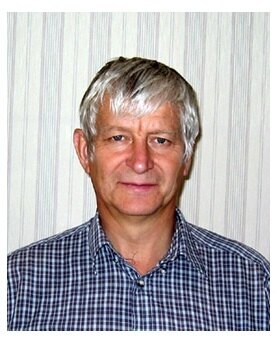
The Man Who Discovered the World’s Largest Cave Chamber: Sarawak Chamber
Andrew James Eavis, or fondly known as Andy, grew up dreaming of exploring caves, and that childhood passion turned him into one of the world's top cave explorers, leading expeditions that have uncovered more uncharted territory on Earth than any other living individual.
Known for discovering the massive Sarawak Chamber, the world’s biggest cave chamber by area, Andrew's life has been quite the adventure.
Living Out His Childhood Dream and Cave Fascination
Born on January 6, 1948, in Alton, Hampshire, England, Andrew’s journey from a farm boy to a celebrated cave explorer began.
After the demise of his parents in his early teen years, he left to pursue his studies in General Engineering at the University of Leicester, discovering not only his passion for caves but also the love of his life, Lilian Olds. They married and had three children. Lilian's unwavering support enabled Andrew to balance cave exploration, career, and his education.
In 1973, a position with the National Coal Board took him to the University of Leeds for a second degree. A top-class varsity and a renowned caving club made this decision easy for Andrew.
At 26, Andrew’s first expedition to Papua New Guinea caught the attention of the Royal Geographical Society, leading to an expedition in Mulu, Sarawak, in 1978.
This marked the beginning of a long-standing partnership with Sarawak and the initiation of the Mulu Caves Project, which saw Andrew coordinate and organise a series of Anglo-Malaysian expeditions, surveying 362km of cave passages in Mulu.
Thirty Years of Pioneering Cave Exploration in the Mulu Caves Project
Andrew is one of the leading speleologists in the world, devoting decades of his life to the fields of geomorphology, hydrology and cave science in the discoveries and mapping of details of Mulu caves at Mulu National Park.
His extensive mapping of the complex Mulu caves system has opened avenues for a wider research, successfully establishing Mulu as an outstanding example of Earth’s geological history and making it a UNESCO World Heritage Site.
In 2011, Andrew applied LiDAR technology (Light Detection and Ranging) at the Mulu Cave Project, a new method for plotting and studying vivid maps of underground spaces in Mulu caves with stunning accuracy.
Andrew is ready for his next voyage, as he is set to lead another expedition in 2019 in Mulu. He will also be handling a project to recreate part of the caves of Mulu in Singapore. He believes that the project will help educate the public on the beauty of Mulu and also contribute commercial strength for the national park.
The biggest challenge Andrew has faced is to convince people that cave explorations are valuable efforts that can benefit many parties. He firmly believes that this endeavour is as crucial as ocean and space exploration.
Disclaimer:
The information in this award recipient's profile is accurate to the best of our knowledge as of the time the award was presented. Any subsequent changes, updates, or developments in the individual's life or achievements may not be reflected in this profile.